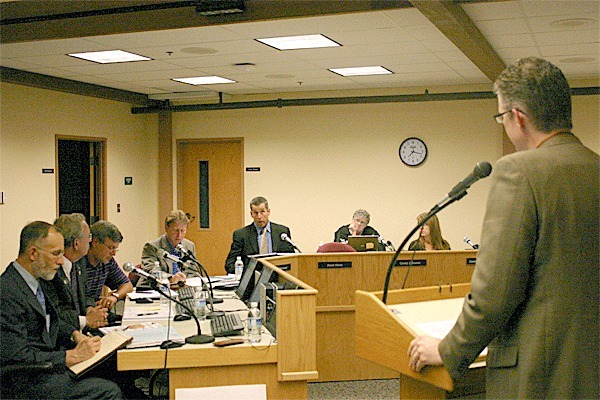While Oak Harbor schools showed strong improvement in two-thirds of the categories of state testing, the only Oak Harbor school to meet state standards this year was Hillcrest Elementary School.
The standard, Adequate Yearly Progress, is raised each year until 100 percent of students will be required to pass the tests in 2014, as stated in the No Child Left Behind law.
Not meeting AYP isn’t unusual; 74 percent of Washington school districts didn’t make it, said Assistant Superintendent Lance Gibbon. Out of 147 similarly-sized districts to Oak Harbor, one made AYP: Mercer Island.
“It isn’t a cause for alarm but it certainly highlights room for improvement,” Gibbon said.
Even though scores improved overall, the percentage of students required to test as proficient increased so the district did not make the standard. For example, the district met the reading standard last year but despite improved scores this year, the district did not pass because the standard was raised to 88 percent of students required to test as proficient.
Students in grades 3 to 8 take the Measure of Student Progress test, which includes reading, writing, math and science tests.
“We are right about the state average in all areas,” Gibbon said.
Eighth grade math has seen a dip in scores over the past years and Gibbon said there is concern that students may be having trouble adjusting to the new math program, something educators plan to address. Sixth and seventh grade students’ math scores showed improvement.
Third grade math also saw a dip and will be addressed.
Eighth grade students had lower scores in reading and science compared to last year.
Crescent Harbor Elementary School had the largest improvements in all areas for the district. Students scored above average in writing after a downward trend since 2006. Fourth grade students improved writing scores by 26 percent and reading by 10 percent.
In fourth grade math, 66 percent of students met the standard, which is the highest in the district.
Fifth grade students increased reading scores by 20 percent, math by 23 percent and science by 38 percent.
“This doesn’t happen by accident. It happens by the effort of teachers,” Gibbon said.
North Whidbey Middle School students made significant improvements by exceeding state and district averages in writing by increasing their scores by 34 percent.
“I know the writing teachers worked very, very hard with students to get the scores where they are,” Gibbon said.
Students also improved in reading and math but the scores remain below the state average. Overall, North Whidbey Middle School earned scores similar to Oak Harbor Middle School, closing the gap between them.
Gibbon said the district hopes the recent $2.1 million Department of Defense literacy grant will help teachers learn new strategies for working with students in reading and writing to improve test scores.
Oak Harbor High school students take the High School Proficiency Exam, which includes reading, writing and science, and End of Course exams in algebra and geometry. Gibbon said scores were about average.
Students began taking math EOC exams in the spring. EOC exams aim to test students on what they learned in a specific course rather than comprehensive tests like the HSPE. In 2012, students will begin taking biology EOC exams.
Gibbon said students exceeded state averages for the algebra exam and the geometry exam, possibly due to the adoption of new math materials.
Peter Szalai, president of the Oak Harbor Education Association, addressed the Oak Harbor School Board at Monday’s meeting with concerns that the “narrow assessment” of these tests removes creativity from student learning.
“These schools are full of great educators no matter assessments,” Szalai said, adding that the district needs to develop its own “complex” way to assess performance.
“We need to take the best out of these tests and not emphasize the parts that aren’t useful and move on because the tests are here to stay,” said Oak Harbor School Board member Peter Hunt.
Hunt emphasized perspective. These tests are just one measure of success but he measures success by every student graduating and entering a training path — college, military, trade school, apprenticeships and more — that means success and career potential for the student, Hunt said.
“Tests can help achieve this but can’t be used as the end-all-be-all of the measure of success for the district,” Hunt said.
The time it takes to get every student tested is “very disruptive to the educational process,” Gibbon said.
It takes one month to test every middle school student because the test is on the Internet now. Each middle school has a few labs with 20 to 30 computers per lab. A computer must be dedicated to one student per day for the tests, Gibbon said. This requires the master schedule for the school to be redone for the month.
Fourth and fifth grade students will begin taking the test on the Internet this year and will face similar challenges as middle school students, Gibbon said.



